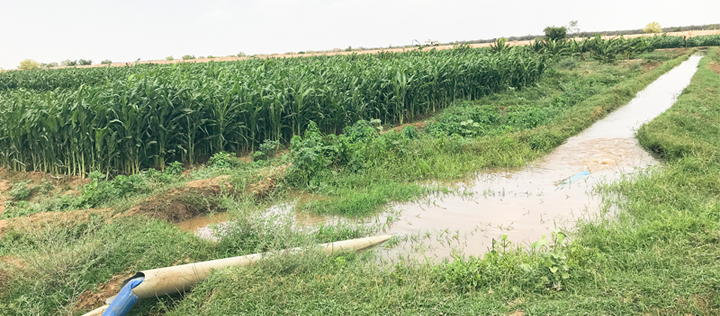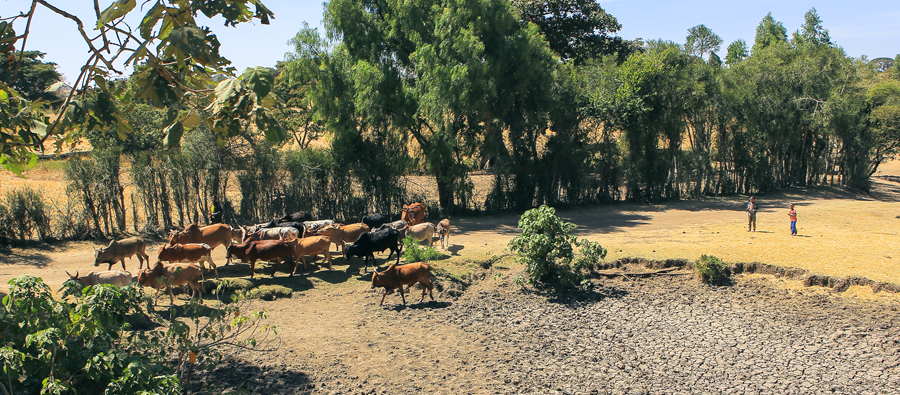By Glen Engel-Cox on behalf of iDE.
“Now that we know how to do this, we will not let it out of our hands,” says Arra Merry, a traditional pastoralist in Ethiopia’s South Omo region. What has she learned how to do? Grow fodder (and the seeds for fodder) that enhances their ability to feed and fatten their livestock and earn an income in this extremely remote and poor location. In just a few years, Ara and her fodder-producing colleagues have enhanced their traditional way of life by learning how to use the Omo river to address drought through agricultural production.

Credit: Glen Engel-Cox, iDE, 2019
A different way of life
Not everyone wants to be a farmer. For the tribal groups living around the Lower Valley of the Omo, the customary way of life centers around cattle, which freely graze under the watchful gaze of villagers. While these populations often engage in planting some vegetable crops to supplement their diet, they are pastoralists first and foremost, focused on the raising of livestock. When two critical drought events struck Ethiopia in the last decade, the land could not support the number of cattle from all the different pastoralist groups, leading to starvation for both cattle and people as well as conflict between people as the groups expanded their cattle grazing into other tribal lands.
A surprising solution
To address the drought conditions and preserve peace, the Ethiopian government brought in cattle fodder from the highlands. Although intended as a temporary aid to overcome disaster, the intervention inadvertently identified a new strategy for increasing incomes and improving lives for these chronically poor populations. Working in partnership with the Ethiopian government, iDE has started to train pastoralists on how to cultivate fodder and food crops (mainly sorghum) using water from the Omo river.
Now in the second phase of implementation, the training and support provided by iDE and local government officials focuses on creating groups of up to 25 people from the same village to work together to plant, maintain, and harvest both seed (for resale) and fodder (for use). Since agriculture production activities are relatively new to these groups, sharing the labor burden helps overcome reluctance in engaging in manual labor: it’s simply more fun when you have someone to work with. In phase one, the first group obtained 13 quintals from 0.6 hectares of land and realized a profit of Birr 26,000. They’ve now expanded production to nearly 1.5 hectares in phase two, and have engaged in discussions about how to expand into other income generating activity. Based on these results, iDE and government workers look to expand the strategy to more groups and kebeles (local districts) within the region.
Enhancing traditional lifestyles
Rather than replacing their pastoralist way of life, iDE and the Ethiopian government believe that learning how to grow fodder (using irrigation) is an important addition to traditional activities that directly addresses pastoralists’ resilience needs. The speed at which tribal groups have embraced the use of fodder to fatten cattle (feeding their animals and generating income through subsequent sales) indicates that the strategy has clear usefulness and utility. By focusing on communities instead of individuals, the approach fits into the context of shared resources and group dynamics important to these tribal populations.

Credit: Antonio Fiorino, iDE, 2017
Pastoralist Plus
Arra is part of a Crop Production Cooperation Group of 25 members, 11 of them female, supported by their local village elders and kebele leaders. The group has a chairperson, a cashier, and a secretary. The entire group discusses how to divide up the work between them and what should be done with the income the group earns. The chairperson, rather than just being the oldest in the group, is chosen for their ability to work across the community.
Crop production isn’t the only change brought about by the recent spate of drought events. Just a decade ago, most village women weren’t allowed to leave the home. Family decision-making had been a male prerogative. With the new enhanced way of life, women are not just taking part in discussions and decisions, but are increasingly influential in the home and community.
For her family, Arra expresses how much the crop production has changed her future outlook. She and her husband have eight children, five of whom are girls who married early and now live in other villages. But her youngest three children now have the opportunity to go to school, the first in Ara’s family ever to do so, because of the income Arra and her husband have received from the group.
“We can’t expect the droughts to end,” Arra says, “but now we know that we can do something about it.” The group faces many challenges, including storage options and how to transport their production to markets, but Arra and the group see a much brighter future ahead for themselves and their community.
Featured photo credits: Antonio Fiorino, iDE, 2017



